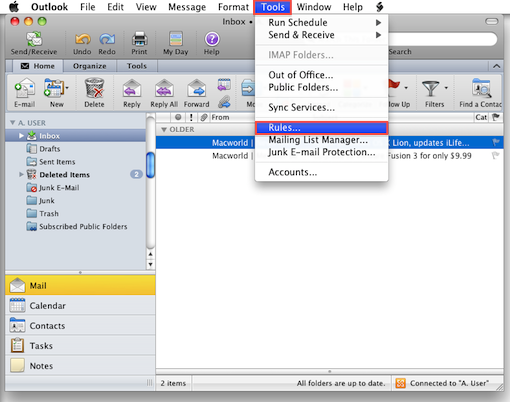

#Snow leopard outlook for mac badge alert corrupt password
Enter the password at the prompt, and then hit enter or return. If I wanted to turn indexing off for my Time Machine drive, which is named Tardis, the command would be:Īfter executing the command by pressing enter or return, you may be asked for your administrator password. As an example, if I wanted to turn Spotlight indexing off for my startup drive, the command would be: For other mounted drives on your Mac, the path would likely be /Volumes/volumeName. For the startup drive, the path would simply be “/” (without the quotes). Where mountPoint is the path to the volume. To turn off indexing for a specific volume launch Terminal, and then use the following command: (You can use the mdutil command to turn off indexing for a specified volume, as shown above for the volume named Tardis.) The mdutil utility manages the metadata stores used by Spotlight and allows you to turn indexing on or off, erase existing metadata storage files, remove local cache indices of network stores, and a few other useful tasks. The Terminal app, located at /Applications/Utilities, offers a number of commands specific to Spotlight, including mdutil, a utility for managing the Spotlight index function. Once removed from the Privacy list, indexing will start for the item you selected. You can turn indexing back on for any volume or folder in the Privacy list by selecting the volume and using the Remove (-) button. To add a volume (or folder), click the Add (+) button, and then select the volume or folder to be added from the standard Choose dialog box. Add a volume to the list, and the indexing process is turned off no new indexing is performed for that volume. The Privacy tab holds a list of volumes and folders that have had indexing turned off. Launch System Preferences, and then select the Spotlight preference pane. (Adding an item to Spotlight’s Privacy tab effectively turns off indexing for that volume or folder.) You may have noticed that the Spotlight preference pane has no on or off switch, but it does have a Privacy tab, which can perform a function that’s similar to turning Spotlight off. Control Indexing With the Spotlight Preference Pane We’ll tackle the Spotlight preference pane first. There are two primary ways to control Spotlight indexing: using the Spotlight preference pane, and directly manipulating the metadata utility used by Spotlight. Nevertheless, there are times when you don’t want to wait for the initial indexing to finish luckily, you have a few options you can use to control indexing. While indexing does take a bit of time, and the length of time needed is dependent on the amount of data stored on the volume, indexing shouldn’t take days or even hours. Other times, when you have plenty of time on your hands, you may notice that indexing never seems to finish. Sometimes you just can’t wait on the Spotlight indexing process, especially if the project you’re working on has a fast-approaching deadline. Subsequent updates to metadata files for the volume are quick, and for the most part, are hardly noticeable. After all, the indexing normally only causes an issue when a volume is initially indexed.

For the most part, if you were aware of the Spotlight indexing process, it was simple enough to just wait the task out. With each release of the Mac OS, Spotlight’s features got better and better, but the indexing issues seemed to remain. (Spotlight indexing has acquired a marginally deserved reputation for extensive use of a Mac’s resources.)


 0 kommentar(er)
0 kommentar(er)
